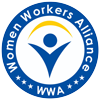Despite making up almost half of Pakistan’s population[1] women remain under-represented in the labour force. As per the Labour Force Survey (LFS) 2020-21,[2] women constitute only 21.3 percent of their total population in comparison to 67.9 percent of men.[3]
The situation at the workplaces in formal sector is not all that conducive and remain one major reason for women’s low participation in the formal sector of the economy. Women workers are faced with irregular employment, low and unequal wages, vulnerable working conditions, job insecurity, insufficient or no social security, long working hours and harassment at the workplace. While this situation at one hand is augmented due to the unconducive workplaces, on the other hand, the labour laws do not provide gender friendly provisions that may encourage more women workers to participate in the formal sector of the economy. Gender pay gap in Pakistan is at 34 percent, which is more than double the global gender pay gap (16 percent).[4] As per TDEA’s Workplace Monitoring Report 2018, a large majority of women are deprived from social security benefits, maternity leaves, daycare centers and separate washrooms.[5] These issues, compounded with the fact that women are not unionized, render them unable to demand protection of their labour rights from employers and duty bearers.
According to an ILO estimate till 2016, there were 7,096 trade unions with a membership of only 1.4 million workers out of the total workers’ population of 60 million. With a small number of trade unions, women constitute only 2 percent of the membership which makes it evident that women workers in Pakistan are largely unorganized, unaware about their rights and unable to demand protection from government against labour rights violations.[6] Even where there is a representation of women in the executive bodies of trade unions and federations, it is tokenistic and discriminatory at various levels.[7]
Against the backdrop, where traditional unions were not very accommodative of the needs and voices of women workers, the women workers felt the need for their organization that is able to highlight the issues specific to them, engage with the employers and duty bearers and advocate for women centered administrative and legal reforms. In 2016, women workers from public, private and industrial sectors organized themselves into five (federal and provincial capitals) cross sectoral alliances with the technical support and backstopping provided by the Trust for Democratic Education and Accountability (TDEA). The Women Workers Alliance (WWA) while increasing its memberships expanded to nine more districts by 2017. The WWA has not only organized itself horizontally and expanded in various districts but have also moved vertically with the formation of provincial coalitions and a national steering committee with representation of women workers from all the 14 district alliances. The alliance has since collectively negotiated on behalf of women workers with employers and duty-bearers for better and safe workplaces. The WWA continues to expand its membership as more women are being mobilized by the existing members. Due to these efforts the WWA has further expanded to 23 districts.
[1] https://countrymeters.info/en/Pakistan
[2] https://www.pbs.gov.pk/sites/default/files/labour_force/publications/lfs2020_21/LFS_2020-21_Report.pdf
[3] https://www.ilo.org/islamabad/areasofwork/informal-economy/lang–en/index.htm
[4] https://www.ilo.org/wcmsp5/groups/public/—dgreports/—dcomm/—publ/documents/publication/wcms_650553.pdf
[5] https://www.wwa-pakistan.org/workplace-monitoring-report-2018/
[6] https://www.ilo.org/islamabad/info/public/pr/WCMS_187903/lang–en/index.htm?ssSourceSiteId=asia/lang–en/index.htm
[7] http://library.fes.de/pdf-files/bueros/pakistan/19148.pdf

